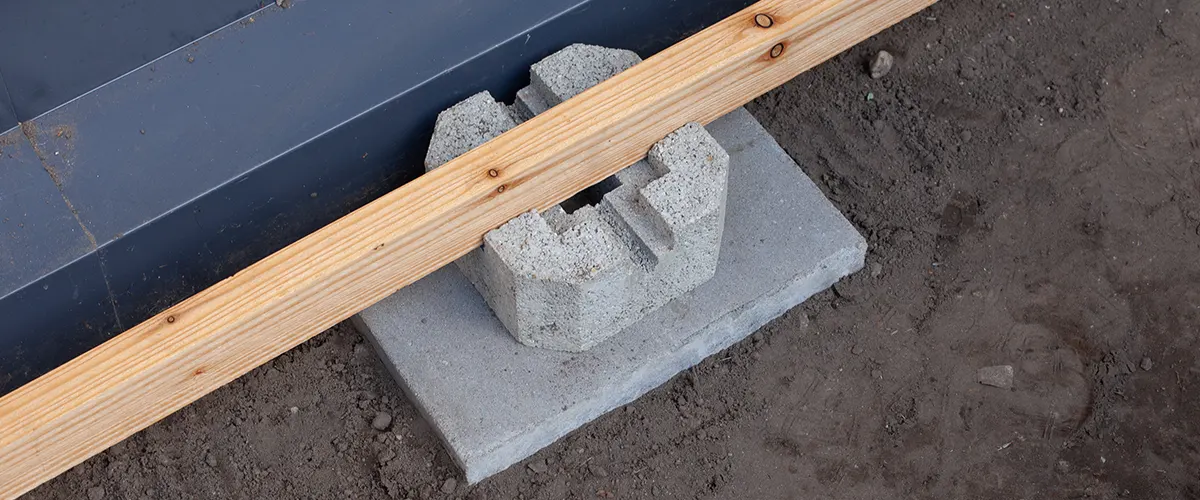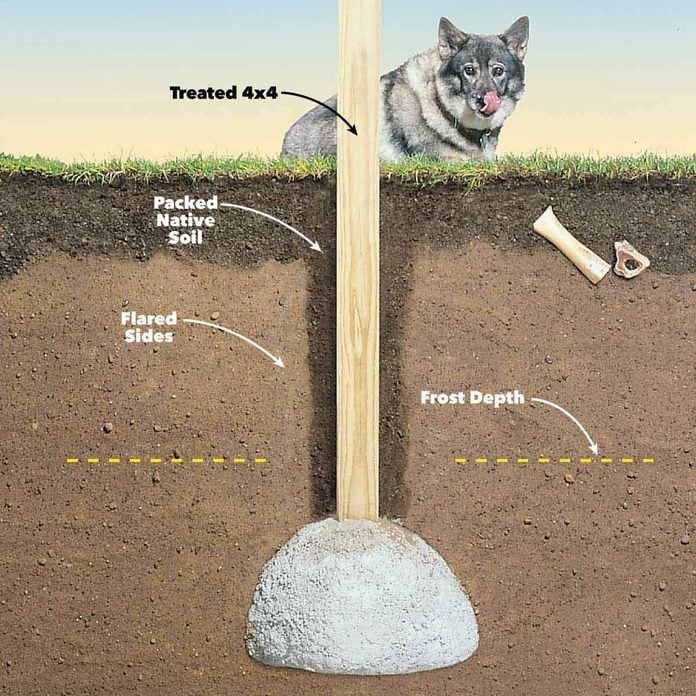Engineered for Success: The Science Behind Durable and Durable Deck Footings
Engineered for Success: The Science Behind Durable and Durable Deck Footings
Blog Article
Picking the Right Deck Footings for Security and Durability
When it comes to constructing a deck, one of one of the most essential choices you will certainly make is choosing the right grounds for stability and longevity. The durability and security of your deck depend heavily on the sort of footings you pick, as they offer the essential assistance and security to endure the examination of time. With a myriad of choices offered, it can be frustrating to figure out which footings are best fit for your specific demands. In this discussion, we will certainly check out the numerous kinds of deck grounds, consider the vital aspects to weigh when making a choice, and explore the benefits and drawbacks of different options. By the end, you will have a clearer understanding of the choices handy and be better furnished to make an informed decision for your deck job.
Sorts Of Deck Grounds
These footings consist of a round opening loaded with concrete, which provides a solid foundation for the deck messages. Concrete pier footings are relatively easy to mount and offer outstanding stability, making them a popular choice for many deck tasks.
Another type of ground is the helical heap footing. Helical heaps are steel shafts with helical plates connected to them. These grounds are set up by screwing them into the ground, which produces a protected structure for the deck. Helical stack footings are optimal for areas with challenging dirt conditions, as they can be installed in virtually any kind of sort of soil. If required., they likewise allow for very easy modification and leveling of the deck.
Additionally, some contractors go with precast concrete grounds. These grounds are made from resilient concrete and be available in various shapes and dimensions to accommodate various deck styles. Precast concrete grounds are practical to set up and provide a stable base for the deck framework.
Lastly, another choice is the post-in-anchor footing system. This kind of ground involves driving a metal anchor right into the ground and attaching it to the deck blog post. It provides adaptability in regards to positioning the deck posts and appropriates for decks with light-weight structures.
When picking the best kind of deck footing, it is important to think about variables such as soil problems, deck load, and regional structure codes (Deck Footings). Consulting with a professional specialist or architectural designer can aid make sure the appropriate footing is selected for a risk-free and secure deck
Factors to Think About When Selecting Grounds
When picking the appropriate footings for a deck, it is critical to thoroughly think about numerous factors such as soil conditions, deck tons, and adherence to neighborhood building ordinance. These factors play a considerable function in making certain the security and resilience of the deck structure.
The kind of soil on which the deck will be constructed identifies the type of grounds called for. On the other hand, decks built on clay or expansive soils might need footings that can accommodate the dirt's propensity to increase and contract.
Another important variable is the deck tons. The weight of the deck, including the materials used and any kind of prospective live lots such as furnishings or celebrations, have to be taken into consideration when selecting grounds. The footings must be designed to birth the weight of the deck and disperse it evenly to avoid any kind of structural issues or failings.
Lastly, adherence to neighborhood building codes is paramount. Building regulations differ from region to area, and it is important to comply with the certain needs established by the local authorities. Deck Footings. These codes make sure that the deck is built securely and meets the required standards for structural honesty and load-bearing capability
Concrete Grounds: Cons and pros

Concrete grounds provide numerous advantages and drawbacks when made use of as the structure for a deck. On the silver lining, concrete footings supply superb stability and toughness. Concrete is a solid and inflexible material that can sustain heavy lots and endure different climate conditions. It also has a long Source lifespan, making it a trustworthy selection for long-term use.
Another advantage of concrete footings is their versatility. They can be put right into various forms and dimensions to suit numerous deck styles and setups. Concrete footings can be customized to fit the particular requirements and requirements of the deck structure.
However, there are additionally some downsides to utilizing concrete grounds. One significant downside is the expense and labor associated with their installation. Concrete grounds need excavation and often require the support of hefty machinery. This can boost the overall expense of the deck project and may call for expert assistance.

Helical Piers Vs. Sonotubes: Which Is Much better?
In thinking about the structure alternatives for a deck, the contrast between helical piers and sonotubes is important in figuring out the exceptional choice. They are twisted right into the ground utilizing hydraulic machinery, providing a secure and sturdy structure for the deck.
The helical plates on the piers produce a solid grasp with the soil, shifting or protecting against any type of activity of the deck. Sonotubes, on the various other hand, rely exclusively on the concrete filling up for stability, which might not offer the exact same degree of stamina and resistance.
In regards to setup, helical piers are relatively much easier and faster to install compared to sonotubes. The hydraulic equipment used to twist the piers into the ground makes sure a reliable and quick process. Sonotubes, on the various other hand, require excavating openings and pouring concrete, which can be lengthy and labor-intensive.
Additionally, helical piers are an even more versatile choice. They can be used in various dirt problems and can be readjusted or reinforced if needed. Sonotubes, on the various other hand, might require extra support, such as rebar, in particular dirt conditions or areas with high tons needs.
Picking the Right Footings for Your Deck's Dimensions
For optimal structural stability, it is necessary to carefully select the suitable footings that line up with the measurements of your deck. The measurements of your deck, including its size, height, and size, play a considerable function in figuring out the kind and dimension of grounds called for.
When picking grounds for your deck, it is vital to consider the load-bearing capacity of the dirt. The weight of the deck, incorporated with the weight of any furniture or people on it, applies imp source a substantial pressure on the grounds (Deck Footings). As a result, it is essential to choose grounds that can sufficiently support this weight without sinking or shifting with time.
The size and shape of the grounds must also be considered. Bigger decks with higher dimensions need larger grounds to offer sufficient security and support. The shape of the footings, whether they are square or round, depends on the layout and design of the deck. Additionally, the deepness at which the footings are installed need to be figured out based on the frost line in your area to avoid any heaving or moving because of freezing temperatures.
Verdict
In final thought, picking the right deck footings is vital for making certain stability and longevity. Elements such as the type of grounds, the deck's measurements, and the pros and disadvantages of various alternatives must be taken into consideration.
These footings consist of a cylindrical hole filled up with concrete, which gives a strong structure for the deck posts. Concrete pier footings are relatively easy to install and use excellent stability, making them a popular choice for many deck projects.
Precast concrete footings are convenient pop over to this web-site to set up and supply a secure base for the deck framework.
It uses versatility in terms of positioning the deck messages and is appropriate for decks with light-weight structures.
Concrete footings offer several benefits and negative aspects when made use of as the structure for a deck.
Report this page